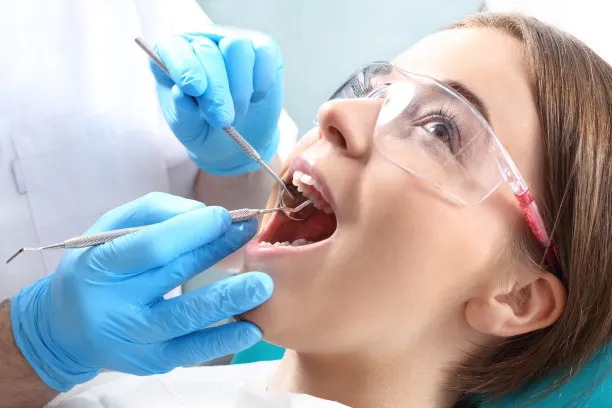Revolutionizing Smiles Through Modern Dental Implant Treatment Techniques for Enhanced Oral Health and Aesthetic Confidence
Summary: Dental implant treatments have undergone a revolutionary transformation, enhancing both oral health and aesthetic confidence. This article delves into the modern techniques deployed in dental implants, highlighting their advancements in materials, precision procedures, holistic patient care, and long-term benefits. The integration of technology has simplified implant placement and improved patient experiences, while new materials contribute to better outcomes. The psychological impact of having a beautiful smile is addressed, showcasing how modern implants boost self-esteem. Ultimately, we explore how these factors collectively contribute to a significant improvement in patients overall quality of life.
1. Innovative Materials in Dental Implants

Advances in materials science have significantly influenced dental implant treatments. Titanium, known for its biocompatibility and strength, has long been a staple in implant dentistry. However, recent innovations have unveiled other materials, such as zirconia, which offer aesthetic advantages by blending seamlessly with natural teeth. These new materials enhance not only functionality but also the visual appeal of implants.
The introduction of hybrid implants that combine different materials further illustrates this innovation. By utilizing the benefits of both titanium and zirconia, dentists can provide solutions tailored to individual patient needs, ensuring optimal results in both durability and appearance. This flexibility allows dentists to address a broader range of conditions and aesthetic requirements.
Moreover, ongoing research continues to explore even more advanced biomaterials that could further enhance osseointegration—the process by which the implant becomes securely anchored in the jawbone. As these technologies evolve, so does the potential for creating more efficient, durable, and aesthetically pleasing dental implants.
2. Precision Techniques in Implant Placement
With the evolution of computer-aided design and imaging technologies, precision in dental implant placement has reached unprecedented levels. Digital impression systems and 3D imaging allow for the precise mapping of a patients oral structure, leading to tailored treatment plans that cater to individual anatomical variations. This precision improves the chances of successful implant integration.
Guided implant surgery has also emerged as a game-changer. Using advanced surgical guides derived from 3D imaging, dentists can place implants with incredible accuracy. This minimizes the risk of complications and reduces recovery time, making the procedure more comfortable for patients. As a result, the overall success rate of dental implants has significantly improved.
Additionally, these precision techniques minimize the invasiveness of the procedure. By making smaller incisions and having clearer visualization of the surgical site, patients experience less trauma and achieve a quicker return to their normal lives. This level of care is crucial in establishing trust and comfort among patients undergoing dental restoration.
3. Holistic Patient Care and Experience
Modern dental practices are shifting towards a more holistic approach to patient care, recognizing the interconnectedness of oral health and overall well-being. This philosophy fosters an environment where patient comfort and emotional support are prioritized alongside clinical excellence. Dentists are now trained to address not just the physical aspects of dental care but also the psychological impact of dental conditions.
Patient communication has become a crucial element in this integrative care model. Dentists today are emphasizing thorough consultations and educational resources to ensure that patients understand the treatment process and the benefits of dental implants. This transparency builds confidence and reduces anxiety associated with procedures.
The incorporation of sedation dentistry has also enhanced patient experiences during implant surgeries. By alleviating discomfort and anxiety, patients are better able to focus on their treatment and recovery, leading to more positive outcomes. This holistic commitment ultimately helps in building long-term relationships between dental professionals and patients, enhancing their overall satisfaction.
4. Long-term Benefits of Dental Implants
Investing in dental implants offers numerous long-term benefits that extend beyond mere aesthetics. One of the critical advantages is the preservation of jawbone health. Unlike dentures or bridges, dental implants stimulate the jawbone through the natural chewing process, preventing bone loss over time. This not only maintains facial structure but also enhances long-term oral health.
Furthermore, dental implants are known for their durability and longevity. With proper care and maintenance, they can last for decades, often making them a more cost-effective solution in the long run compared to other forms of dental restoration. This economic benefit can reassure patients contemplating their options for oral rehabilitation.
Finally, the psychological boost that comes with restored confidence in ones smile cannot be overstated. Many patients report improved self-esteem and quality of life after receiving dental implants. This emotional and social dimension of oral health highlights the comprehensive benefits that modern implant techniques provide, creating life-changing impacts on individuals.
Summary: The advent of modern dental implant techniques has significantly revolutionized dental care, leading to enhanced oral health and aesthetic confidence. Innovations in materials and precision procedures, along with a focus on holistic patient care, have made implants more reliable and accessible than ever. The long-term benefits further cement their place as the ideal solution for many dental patients.
Through these advancements, we see how dental implants not only restore smiles but also empower individuals by improving their quality of life. In addressing both functional and emotional needs, dentistry continues to evolve toward greater heights.
This article is compiled by Vickong Dental and the content is for reference only.



